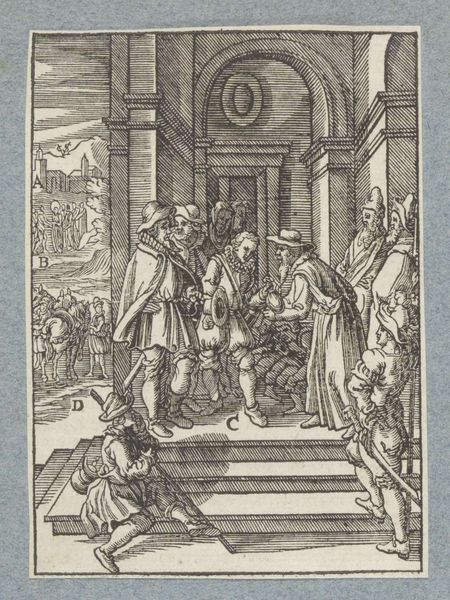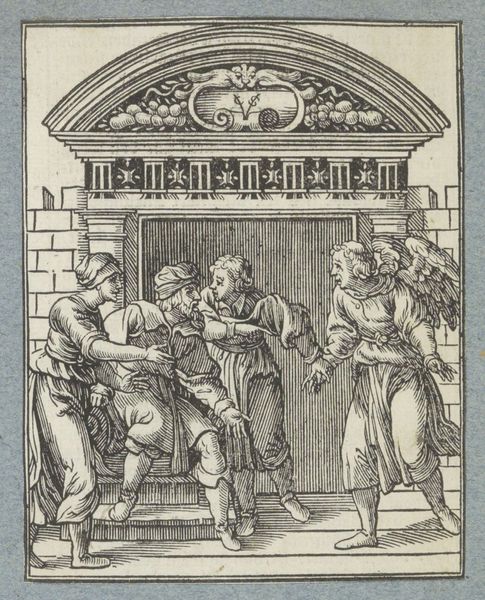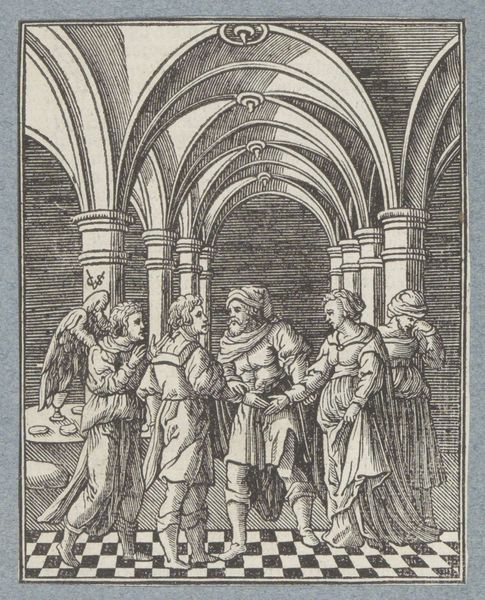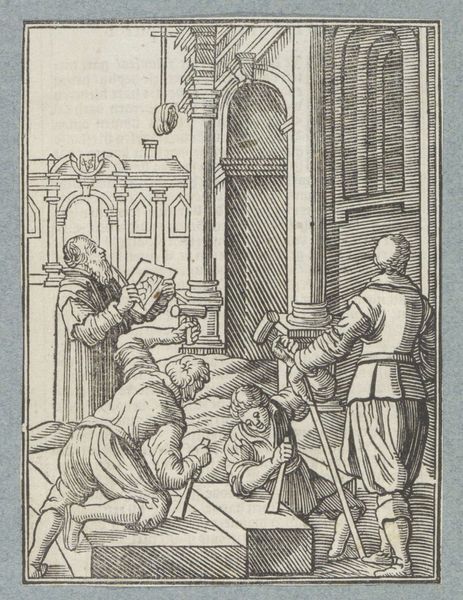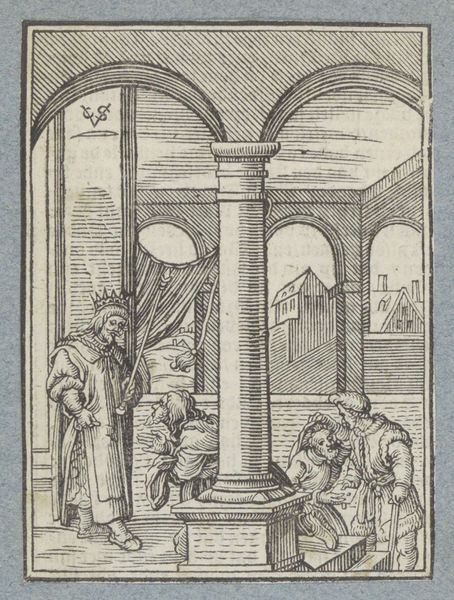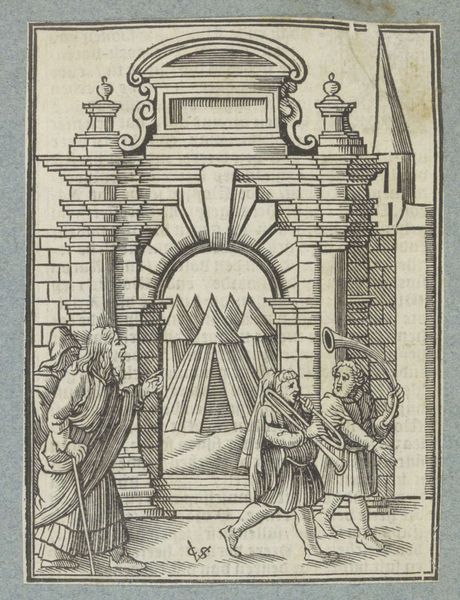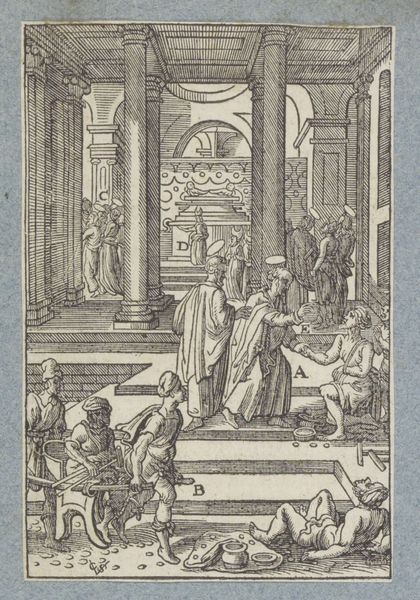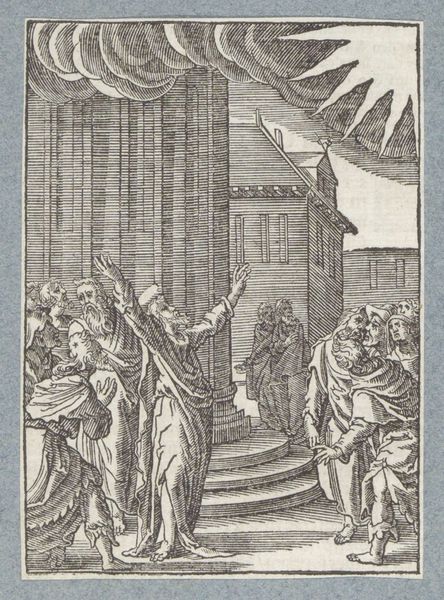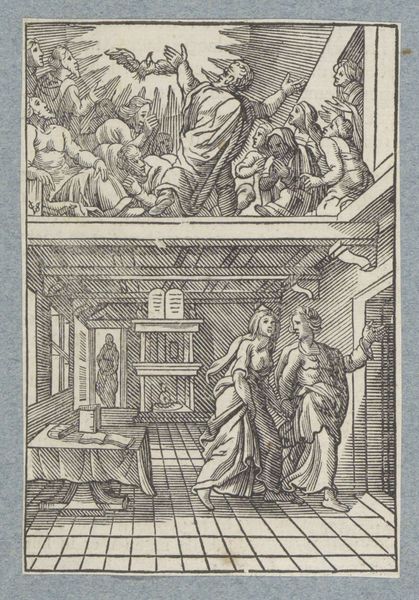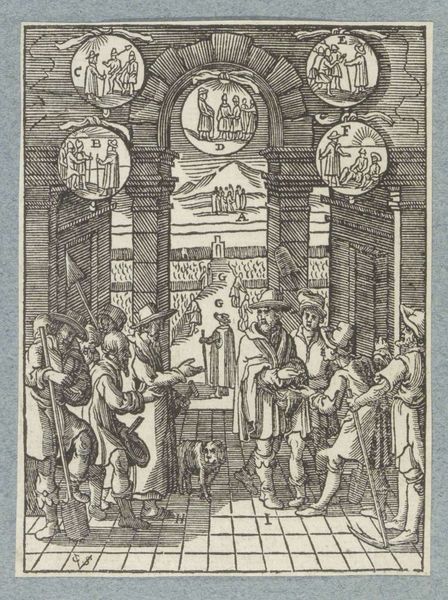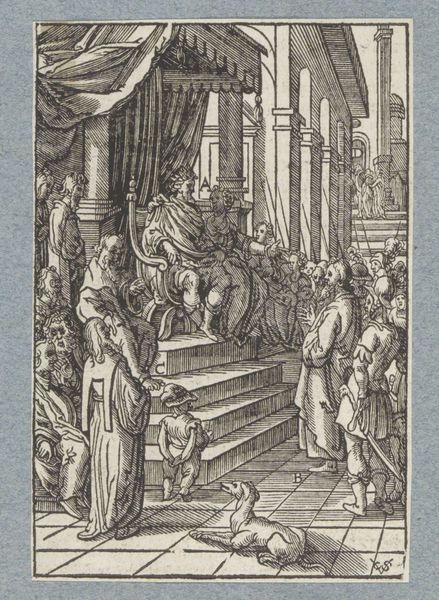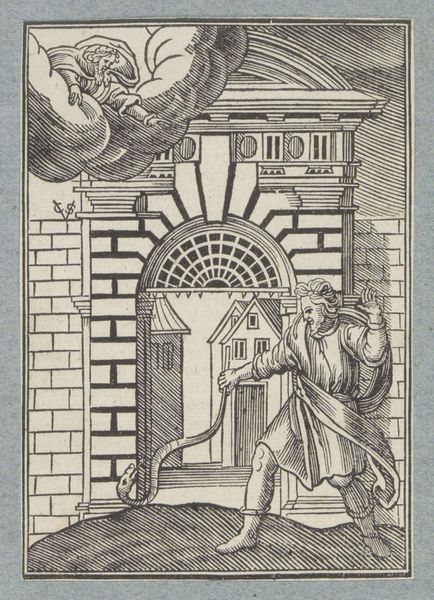
print, engraving
#
narrative-art
#
dutch-golden-age
# print
#
figuration
#
line
#
history-painting
#
engraving
Dimensions: height 111 mm, width 73 mm
Copyright: Rijks Museum: Open Domain
Curator: This is a print titled "David speelt harp voor Saul," or David Playing the Harp for Saul, made between 1645 and 1646 by Christoffel van Sichem the Younger. Editor: My goodness, look at the austerity! The way the lines define form feels incredibly deliberate, almost… carved. It feels solid. Curator: Precisely! It's an engraving, so the lines are physically etched into a plate, traditionally copper, although that's hard to confirm here without examining the artifact directly. This meticulous technique definitely lends it a strong, architectural quality. Editor: Ah, that explains the distinct line work! So, this wasn’t just drawn—there was a whole labor-intensive process to get here. Thinking about the economics of printmaking, how widely would something like this have circulated? Was this luxury, or something closer to mass production for the era? Curator: It's that fascinating tension between accessibility and artistry, isn't it? Prints made art, ideas, stories portable, reproducible. Yet the skill and time involved mean it wasn't quite disposable. This piece depicts a scene from the Bible, David calming King Saul with music—a narrative of peace amidst turmoil. Editor: Is it me, or does Saul look less calmed and more like he’s being actively restrained? What a story conveyed via sharp contrast! The harp almost appears caged by its linear representation too, doesn't it? Everything here speaks of containment, which may mirror the subject: emotional and political tensions made visual. Curator: Yes, I agree. And the architectural setting dominates the image – a heavy gateway. Sichem has really considered not just the subjects, but their placement and environment and relationship with their setting. What can appear flat on first viewing becomes something layered on further examination. Editor: It’s incredible how a story of harmony relies on this gritty, almost confrontational method. One wonders how the reception of this piece, the materials and labor considered, influenced the market, consumption, and social commentary embedded in this scene so deliberately rendered. Curator: Considering these factors can truly help to breathe life back into the piece.
Comments
No comments
Be the first to comment and join the conversation on the ultimate creative platform.
